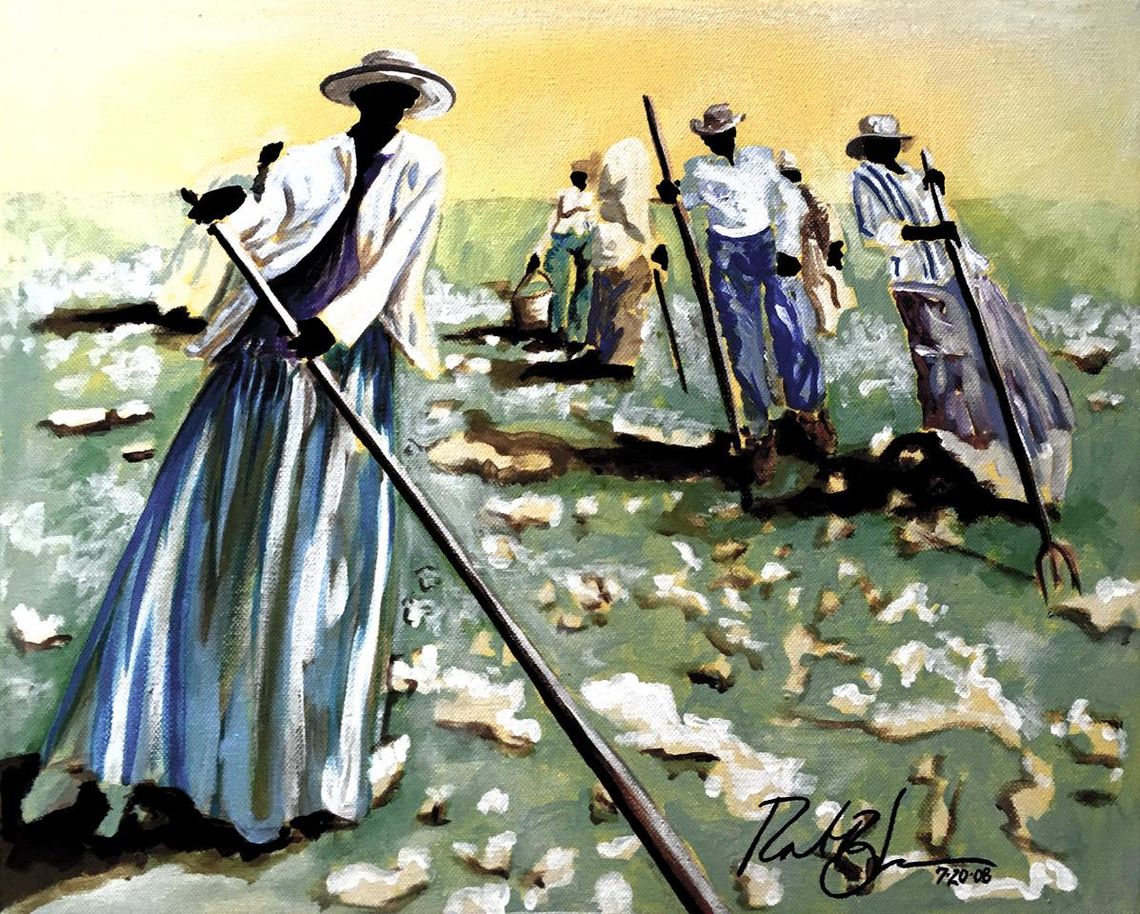To mark the 400th anniversary of the beginning of slavery in America, the San Marcos Public Library will be hosting a panel discussion with author and historian Joleene “Jo” Snider and artist Robert “Bob” Jones on their creative collaboration on Snider’s book “Claiming Sunday: The Story of a Texas Slave Community.”
Dr. Elvin Holt of the Calaboose African American History Museum will moderate the panel discussion.
“Claiming Sunday” is a historical book illustrating and detailing the daily lives of the slaves owned by the Devereux Family from 1830 to 1865. The Devereux slave community was brought to Texas from Alabama in 1841 by their owners John and Julien Devereux, according to Snider.
“The Texas part of the story starts when Julien Devereux had gotten himself in a lot of trouble. So he absconded with some slaves that didn't belong to him and ones that did, in 1841 from Alabama.” Snider said. “They came to Montgomery County, which is basically Houston these days, but it was north of Houston at that point. And he stayed there until 46, when he moved to Rusk County in deep East Texas.”
Snider uses the records kept by white slave owners to delve into rich detail — covering family connections, daily routines, food, clothing and even medical care — to tell the story of the slave community.
“This story, I had to use the records of the white owners, but the idea was to highlight the slaves’ lives and it's a very detailed study of what they did every day, what their work was, how many hours they worked a month and through the whole year and as much as I could pull out about food and work routines and relationships,” Snider said. “But that's what the story is about; it's a sort of a methodological use of these white records to get at black lives. And if you interpret the records from that perspective, from this community, you get a whole different view.”
The panel discussion, entitled “The Author, the Artist and the Collaboration,” will be a discussion on the coming together of the book as well as the collaboration between Snider and Jones since they started working together after meeting at a Walkers’ Gallery art exhibit.
Back in 1996, Jones was part of an exhibit at the Walkers' Gallery and had several of his paintings hanging there.
“I had done an exhibit of some Black and African-American art there and Jo had seen a piece of mine many years ago. And I could see that she was interested in one of the pieces and I guess she had in the back of her mind — I now know she had in the back of her mind — her book was coming to and she wanted to use me and my style of interpreting black and white,” Jones said.
The painting she was interested in was, entitled "Choppin." Snider purchased the piece, and Jones thought that was the end of the transaction, and it was for awhile.
“So she saw that and purchased that one and then kept it for years,” Jones said. “I didn't hear anything about her and she didn't know anything about me. Until one day I got a phone call. She said ‘Is this Bob Jones, the artist?’
More than 20 years after purchasing “Choppin,” Snider wanted Jones to paint her a cover in his distinctive fashion that captured her book — that was still just a rough manuscript at the time. So he asked if he could read it to get a feel for it.
Jones had told Snider it would take him several weeks to get through the manuscript and start working on the cover. But he read the manuscript and produced a full size painting of his cover concept in just 12 days’ time.
“He told me ‘Oh, it'll take me 4-6 weeks to do this.’ He read the manuscript and in 12 days, he came over with this magnificent piece of art. And he had an easel and he had it covered and when he pulled that cover off I was just totally speechless,” Snider said. “I just sat there and stared at it. It was like he created this portal through which all my words went; he created the door into this community and lives.”

Commissioned art piece for the cover of "Claiming Sunday" by Robert Jones.
Snider said the way Jones paints his characters in his paintings to be solid black and featureless was something that connected with the symbolism in her book, it was a sort of kismet of their inspirations meeting.
“These people live their entire lives nameless and faceless — personless,” Snider said. “They were property under the law. And we talked about it and he said he could give them faces and features if I wanted, but I said ‘no keep it.’ I wanted to keep those faces like that. I didn't want them to have features. We wanted the symbolism and issues of slavery there.”
Jones felt similarly about Snider’s work. He felt enveloped in the stories and the people she wrote about.
“I left with the manuscript and read it in about two and a half days because I was just so into it,” Jones said. “I just became a part of it, like I was there, like I could see everything. It was like a dream that was alive or in the flesh.“The Author, the Artist and the Collaboration” panel will be held on Oct. 22 at 6:30 p.m. at the San Marcos Public Library. Jones’ work will be on display around the room during the presentation. For more information, call 512-393-8200.








